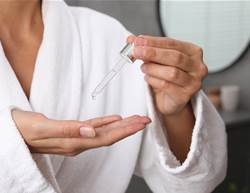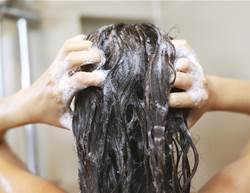Oh, sugar: you really do do a number on our bodies — from energy spikes and slumps to weight gain, to speeding up the process of ageing. Yes, really: too much sugar is involved in an ageing process called glycation, and it’s happening to all of us, right now.
What does sugar do to skin?
Before we begin, let’s get one thing straight. We’re not suggesting you give up every skerrick of sugar, forever. As with most things that feel good (but aren’t so great for our health), moderation is key. And the same goes for skin. “When glucose isn’t burnt or used efficiently, and particularly if there’s large amounts present, it has spin-off effects. And one of those is advanced glycation end products, or AGEs,” explains clinical scientist Professor Merlin Thomas.
So what exactly are A-G-Es?
As the name suggests, they age our body and our face — literally. Advanced glycation end products are formed when a glucose molecule sticks to a protein such as collagen or elastin. Skin health expert Emma Hobson from the International Dermal Institute describes how it works: “Imagine your left hand is the sugar and your right hand is the collagen. Make your fingers interlock with one another and they stiffen, and are no longer repairable.”
Our skin deals with ageing by singling out the old and replacing it with the new, so when this natural function is obstructed and your skin can’t produce as many fresh, healthy proteins, the visible signs of ageing occur. Think fine lines, sallowness and a deterioration of skin texture.
What the experts say
Most of what we know about glycation stems from diabetes research, and what they’ve discovered could do great things for your skin. The reason? Researchers have found that the connective-tissue damage and chronic inflammation suffered by diabetics, due to continuously high blood sugar, can lead to conditions such as cataracts, vascular tightening and diseases of the pancreas and liver. As people with type 2 diabetes have a reduced ability to control their glucose levels efficiently, glycation is accelerated.
Even if you don’t have diabetes, glycation still matters, since it can trigger inflammation, one of the major causes of skin ageing. “When protein and sugar lock, it can stimulate what’s called a receptor site [known as receptor for advanced glycation end products, or RAGE],” Hobson says. On activation, RAGE indirectly switches on the inflammatory genes. And once they’re on, the flame can continue to burn long-term, and that’s bad news for your complexion. “Inflammation is a major producer of free radicals, used by the immune system to get rid of damaged cells,” Thomas adds. “However, free radical damage is indiscriminate and results in collateral damage if left firing away. And what that means is that you can lose fullness, firmness and skin texture.”
Love to spend time in the sun or crunch on crackers and toasted foods? Lifestyle factors can greatly influence the speed at which AGEs form. In a report published in Clinics in Dermatology, Dr William Danby writes: “Ultraviolet exposure increases cross-linking in the skin.” Not only does your skin have sugar molecules to contend with, but the sun’s rays will glycate collagen too. But it turns out that a love of doughnuts and cupcakes isn’t the only culprit when it comes to fine lines. Much has been written about foods with pre-formed AGEs, that is, foods that have been cooked at very high temperatures or for prolonged periods.
What you can do about it?
According to dermatologists, it’s possible to slow the formation of glycation—and save your skin, simultaneously. Their advice? Attack it two ways. First, the obvious one: glucose. Yes, sugary processed foods such as cakes and lollies are best kept as occasional treats. “You have to be very careful with your processed sugars because they [leave] a reactive chemical in the body,” Hobson says. Thomas believes it’s not so much the ‘what’ but the ‘how much’. “The important thing [is] reducing the amount we eat,” he says. Second: aim to use more water-based cooking techniques. Pick a poached or boiled egg over fried; fresh salmon over grilled; and marinate steak in lemon juice or vinegar before you throw it on the BBQ as low pH liquids have been found to naturally slow down these ageing compounds.
Any expert will tell you prevention is key, as cross-links are irreversible. While nothing dietary has been found to abolish AGEs, some natural compounds can inhibit their production. On the list: cinnamon, cloves, oregano, ginger, garlic and alpha-lipoic acid (found in broccoli and spinach). Dermatologists expect to see these crop up in topical skin treatments in the near future. But for now, the best defence is including them in your daily diet. And as for cutting down on your consumption of sugary edibles, all you have to do is look in the mirror. The truth is, you’re sweet enough.
Looking for foods your skin will love? Step right this way for 28 foods to eat for younger-looking skin.










